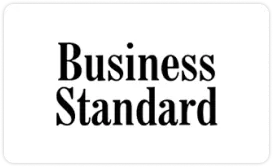
7 Common Mistakes to Avoid When Applying for an Australian Visa
Introduction to Australia Migration
Australia is not just famous for kangaroos and breathtaking coastlines. It's also among the most sought-after destinations in the world for migrants. If you're looking for career growth, world-class education, or a relaxed lifestyle, migration to Australia can be life-changing. But before you begin to pack, there's one thing you must get right — your visa application.
Why People Move to Australia
People move to Australia for all kinds of reasons. Some are drawn by the booming job market, while others are looking for its excellent healthcare and education systems. Australia's multicultural community, stable economy, and high quality of life make it a dream place for many people.
Importance of Visa Applications
Getting a visa is no easy procedure. It's the official entry that enables you to live, work, study, or even just visit Australia. A small mistake in your visa application can delay your plans — or worse, have your application rejected. Let's find out the most common mistakes and how to prevent them.
Mistake #1 – Choosing the Wrong Visa Type
Overview of Australian Visa Categories
Australia has more than 100 visa subclasses. From student visas and skilled migration visas to family reunion and visitor visas, there's something for everyone — but not everyone is the right fit for every visa.
How to Choose the Right Visa for You
Choosing the wrong visa will cost time and money. Start by making what you wish to do — will you be employed, studying, or going to live with a relative? Look at the Australian Department of Home Affairs' website to see what to do next. If you're not sure, call upon a registered migration agent.
Mistake #2 – Incomplete or Incorrect Application Forms
Common Errors in Forms
Even small typos or inconsistent facts (like name spellings or passport numbers) can raise suspicions. Blank spaces left in or misinterpretation of questions can cause delays or outright rejection.
Tips to Ensure Accuracy
Re-check every field. Double-check your passport and other official documents. Better yet, have someone else go over your application before submitting.
Mistake #3 – Omitting Health and Character Requirements
What Health Checks Are Necessary
Depending on the visa, you might be required to have a medical check. Candidates from high-TB countries or those who will be staying for an extended period usually require health checks.
The Character Test
Australia is very strict about criminal history. You'll be required to provide police certificates from all countries you've resided in for 12 months or longer over the last 10 years. Passing the character test is a requirement; failing it will be a showstopper.
Mistake #4 – Not Providing Enough Supporting Documents
What Documents Are Typically Required
Each visa has its own list, but generally, you’ll need:
- A valid passport
- ID documents
- Financial proof
- Police checks
- Employment or academic records
How to Organize Your Documents Properly
Don’t just dump a bunch of PDFs. Use clear labels, organize them logically, and follow the file naming conventions mentioned in your application guide.
Mistake #5 – Applying Too Late
Importance of Timing
Visa applications can take weeks or months. You risk missing important deadlines – such as university intake dates or employment start dates – if you procrastinate.
Ideal Timeframe for Application
Start your application process 3–6 months prior at most, depending upon the visa type. This creates some leeway in case of unexpected delays.
Mistake #6 – Not Checking Visa Conditions
Common Conditions on Australian Visas
All visas are subject to conditions. Some of the standard ones:
- Work limits (e.g., hours allowed)
- No conditions for extended stay
- Mandatory health cover
What If You Break Them
Breaking visa conditions has serious consequences – cancellations, deportation, and even future application bans.
Mistake #7 – Illegal Use of Migration Agents
How to Spot a Scam
If anyone guarantees you a visa or asks for money upfront without specific documents – run! They're likely a scam.
Finding a Registered Migration Agent
Always check the MARA register to verify if your agent is certified. Registered agents must follow a strict Code of Conduct and can actually help, not hurt, your chances.
Tips for a Successful Australian Visa Application
Do Your Research
Understand the visa you’re applying for. Read everything — from eligibility to processing times.
Keep Copies of Everything
Save all emails and documents. If ever there is a problem, these backups can save you a tremendous amount of stress.
Stay Up-to-Date with Immigration Information
Immigration laws change often. Make sure you’re working with the latest guidelines — not something outdated from last year’s blog post.
Conclusion
Emigrating to Australia is a thrilling experience, but one that begins with having your visa right. The process can look intimidating, but with a bit of planning and attention to detail, you can steer clear of the common pitfalls that trap so many others. It might be as straightforward as choosing the correct visa, or avoiding unscrupulous agents, but every detail counts. Be patient, be thorough, and above all — persist. Australia might be the fresh start you've been looking for.
FAQs
Incomplete forms, missing documents, or not meeting health and character requirements are the top reasons for rejections.
Yes, you can reapply, but before that, you should know why your application was rejected and attempt to solve that issue.
It varies depending on the visa, but they all generally take anywhere from several weeks to a few months.
No, though it might be helpful if your case is complex or you just prefer to have no worries.
There are some visas, like skilled migration visas, which have age restrictions (usually 45). There are others, like family reunions, which don't.











